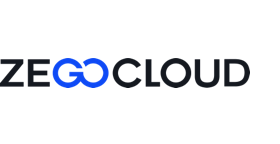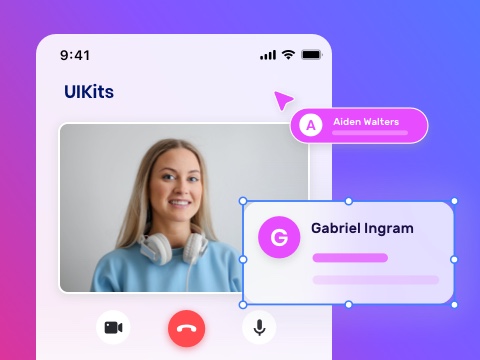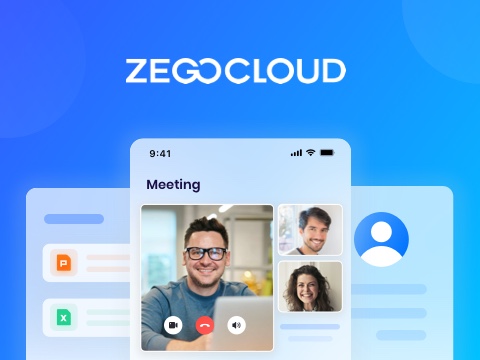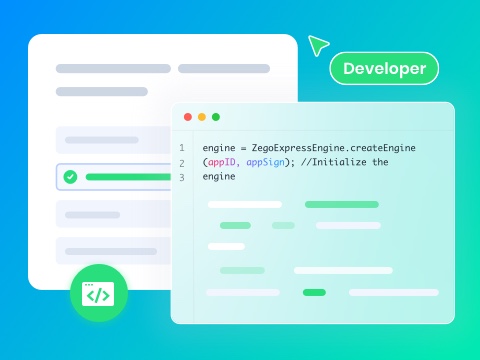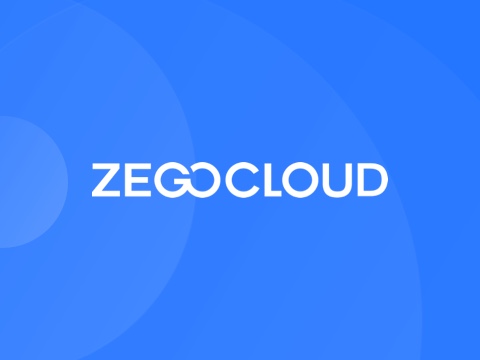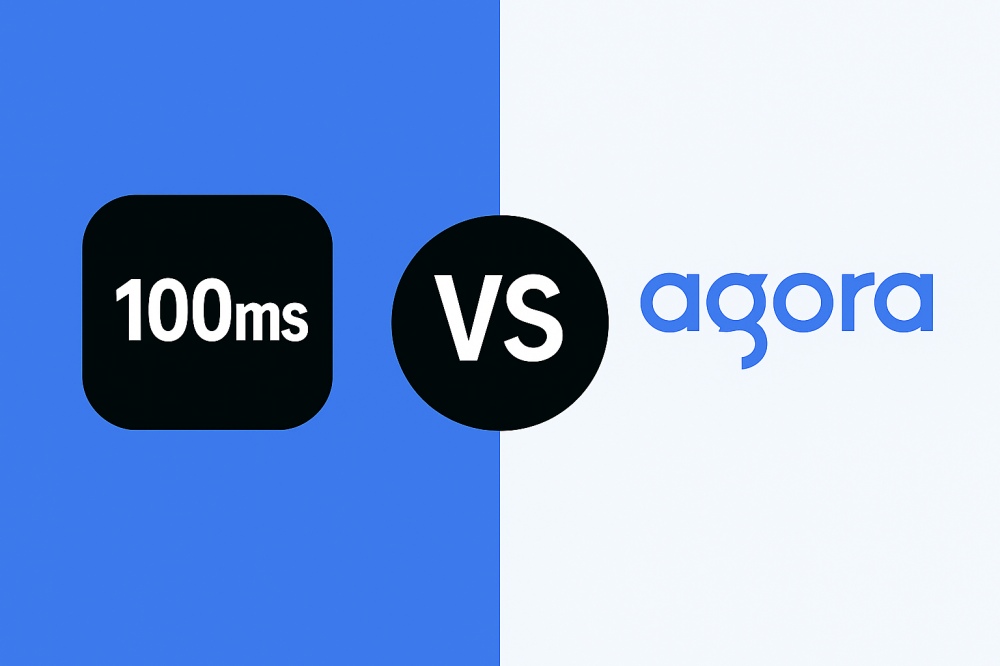Right now, 100ms vs Agora are two renowned names among which developers are confused. As both solutions offer innovative features and SDKs, selecting the right one can be a daunting task. Therefore, in this guide, we’ll compare these platforms in detail. Review the article, examine the benefits and drawbacks of each tool, and determine which one best suits your skills.
What is 100ms?
100ms is a cloud-based platform and developer toolkit that helps build custom live video and audio apps. It also offers live stream, webinar, and interactive event infrastructure, APIs, and SDKs. This simplifies the addition of real-time communication to a project for developers.
Besides, it includes high-quality video conferences, scalable live streaming, and custom UI. Furthermore, it allows developers to create a more interactive experience with chat, whiteboards, screen sharing, and recording. This platform is also compatible with web, Android, iOS, and desktop applications, unlike other platforms.
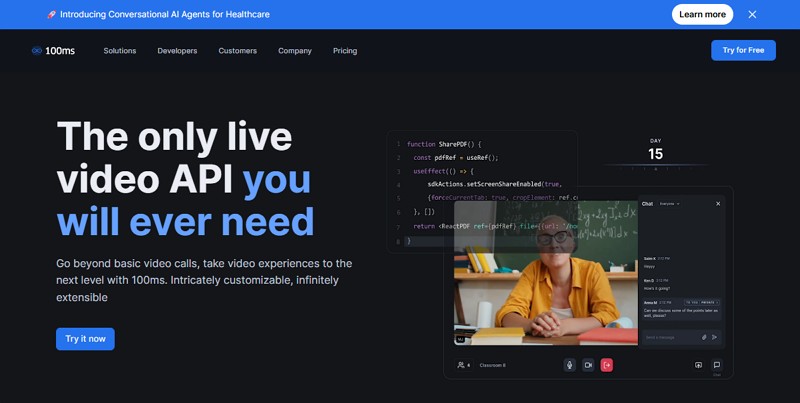
Advantages and Disadvantages of 100ms
When developers compare 100ms vs Agora, the first thing they want to know is its benefits and drawbacks. Therefore, this section highlights a few perks and drawbacks of 100ms to help you make a foremost choice.
Advantages
- Optional HIPAA and GDPR features for regulated industries.
- Adjusts streams for low bandwidth or packet loss.
- Maintains call integrity on different devices and connections.
- Let businesses tailor the platform to their specific needs.
- Offers prebuilt UI templates and allows fully custom designs.
Disadvantages
- Set up, integration, and advanced features need technical skill and time.
- Advanced compliance, support, and integrations may add extra fees.
- Manual processes can lead to mistakes in invoices or subscriptions.
- Some advanced tools of 100ms require higher-tier plans.
- Reliability issues can affect essential events or meetings.
What is Agora?
Agora is a cloud service that provides developers with APIs and SDKs that are easy to use. Using it, developers can add real-time voice, video, messaging, whiteboard, and live streaming to web, mobile, and desktop applications. It also supports speedy response time, high-quality audio and video, and scalable live streaming with SD-RTN.
Comparing 100ms vs Agora for video chat, Agora has screen sharing, teamwork notes, AI noise reduction, and virtual backgrounds. It also provides SDKs to operate on Android, iOS, web, macOS, and Windows. Besides, it has safety measures such as AES 256 encryption, privacy settings, and moderation tools to provide you with greater control.
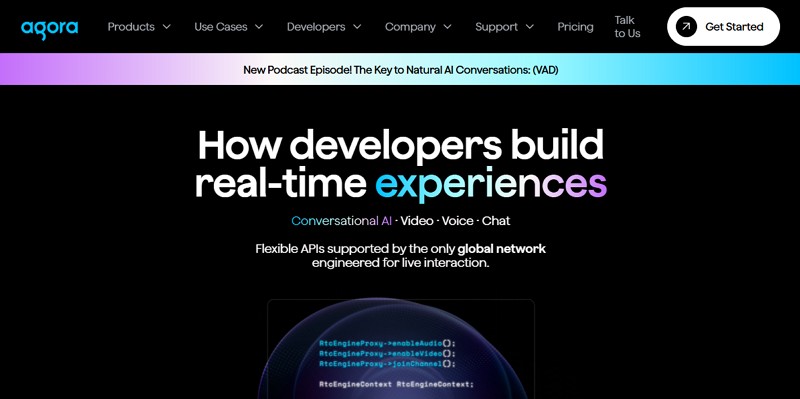
Advantages and Disadvantages of Agora
To choose between 100ms.Live vs Agora, do you need to evaluate the pros and cons of Agora? If so, review the given points and determine if this solution meets your developing skills:
Advantages
- Agora’s network delivers high-speed interactions, often under 400ms.
- It can handle millions of users at the same time.
- Supports no-code and SDK-based setups for developers.
- Servers worldwide ensure reliable connections everywhere.
- Build your own UI, workflows, and role-based features.
Disadvantages
- Add-ons like recording may increase the total cost.
- New developers may struggle with the RTC protocol guides.
- Poor networks can still cause delays or slow performance.
- High usage times may affect streaming quality.
- Some features or UI options are not available in all languages.
100ms vs Agora: Which One is Right for You?
Sometimes you might not have enough time to compare 100ms vs Agora in detail. Therefore, this section offers you an in-depth comparison of both platforms to save you the hassle.
| Metric | 100ms | Agora |
|---|---|---|
| Global Scalability | Up to 10,000 viewers, 200 hosts | Millions of users, thousands of channels |
| Ultra-Low Latency | 150–300ms, WebRTC/HLS-based | 300ms or less, SD-RTN-powered |
| SDK & Platform Support | Web, iOS, Android, React Native, Flutter | Web, iOS, Android, React Native, Windows, macOS, Unity |
| Ease of Integration | Modern, simple, single SDK for AV/Livestream | Feature-rich and mature; some integrations are complex |
| Prebuilt UI Templates | Yes, with customization | Yes, no manual coding required for core UI |
| In-Built Chat Support | Yes, ready-to-use | Yes, ready-to-use |
| CDN/RTMP Streaming | In-built streaming support | In-built streaming support |
| Breakout Rooms | In-built, easy to set up | In-built, easy to set up (but custom logic needed for advanced multi-room flows) |
| Peer/Session Data Management | Built-in support | Limited (DataStream API available, custom handling needed for state sync) |
| Security/Compliance | HIPAA, GDPR optional | Enterprise-grade, AES-256, GDPR, HIPAA |
| AI-Powered Features | Limited AI | Robust AI: noise suppression, backgrounds, more |
| Role-based Interactivity | Yes | Yes |
| Network Adaptation | Good, handles edge cases, device failures well | Excellent (SD-RTN), global failover |
| Documentation & Learning Curve | Simple, great for beginners | Complex, better for advanced developers |
| Pricing | Lower, transparent discounts for large volumes | Competitive, pay-as-you-go, can get pricey |
| Support/Community | Active, fast responses | Large, but slower response, enterprise-focused |
| Custom Branding | Yes | Yes |
| Event Moderation | Yes | Yes |
| Session Recording | Yes | Yes |
ZEGOCLOUD: A Better alternative to 100ms and Agora
If you are still deciding between 100ms vs Agora for your video chat solution, ZEGOCLOUD offers a more comprehensive option. For a deeper understanding of how it compares, you can also read ZEGOCLOUD vs 100ms and ZEGOCLOUD vs Agora.
Unlike most platforms that focus only on basic video and audio SDKs, ZEGOCLOUD integrates real-time communication with advanced conversational AI capabilities, enabling developers to build more engaging and intelligent applications. It provides easy-to-use SDKs and more than 20 prebuilt UIKits that simplify development and reduce integration time for engineering teams.
In terms of performance, ZEGOCLOUD delivers consistently ultra-low latency, averaging around 300 ms globally and reaching 79 ms under optimal conditions. It also allows developers to create AI agents that support real-time interaction and prompt switching within 500 ms, offering a level of interactivity that competitors like Agora and 100ms have yet to match.
For scalability, ZEGOCLOUD supports multi-host live streaming without limiting the audience size. Developers can host up to 10,000 participants and reach more than 10 million viewers, making it ideal for large-scale, interactive live events.
ZEGOCLOUD also provides flexible pricing options for HD, Full HD, and 4K video calls and live streams, helping businesses scale efficiently according to their needs. With SDKs for more than 18 programming languages and frameworks, as well as built-in analytics dashboards and quality monitoring tools, engineering teams can develop, monitor, and optimize applications with greater efficiency and transparency.
In summary, ZEGOCLOUD stands out for its combination of low latency, AI-driven features, scalability, and development efficiency, areas where 100ms and Agora are more limited.
Conclusion
Summing up, 100ms vs Agora are the two main competitors right now, and developers want to choose between them. Therefore, this guide has compared both platforms in detail to make a reliable choice. However, it’s suggested to use ZEGOCLOUD as the platform supports 10,000 video call participants and 10 million+ live stream viewers under 300ms low latency.
FAQ
Q1: What is the main difference between 100ms and Agora?
The main difference lies in positioning and scalability. 100ms focuses on fast integration with prebuilt templates for live streaming and video calls, while Agora offers a broader range of SDKs and infrastructure designed for enterprise-scale applications.
Q2: Which is better for live streaming — 100ms or Agora?
Agora provides more mature infrastructure and broader global coverage, which benefits large-scale live streaming. 100ms, however, is easier to integrate for smaller teams or startups that want to go live quickly with basic customization.
Q3: Is 100ms cheaper than Agora?
Pricing depends on usage and traffic regions. In general, 100ms tends to be more affordable for early-stage projects, while Agora’s pricing can be higher due to its enterprise-level reliability and global presence.
Q4: Are there alternatives to 100ms and Agora?
Yes. ZEGOCLOUD is a strong alternative that combines low latency (average 300 ms), AI-powered features, and easy SDK integration. It’s suitable for developers who need flexibility and scalability across industries like social, education, and entertainment.
Let’s Build APP Together
Start building with real-time video, voice & chat SDK for apps today!
